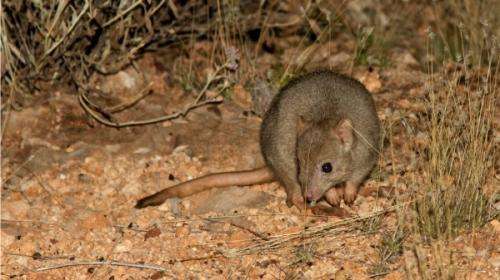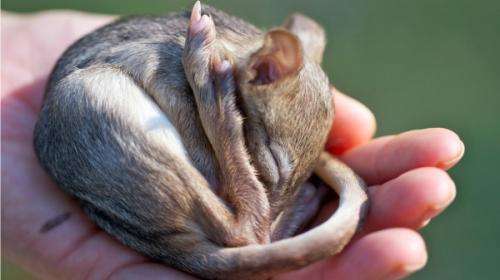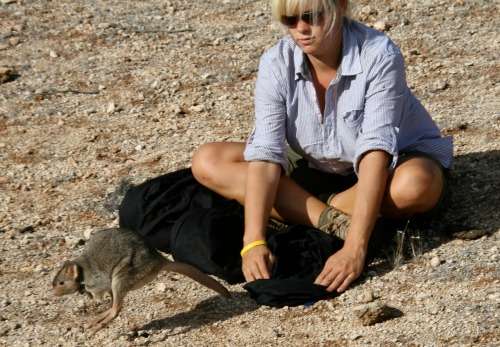Isolated boodies repopulate the mainland

Two populations of translocated boodies (Bettongia lesueur) which were set up to re-establish locally extinct species at Lorna Glen in the Murchison have created a thriving population made up of fertile hybrid offspring.
UWA PhD candidate Rujiporn Thavornkanlapachai says her breeding program involving boodies taken from Barrow Island and islands near Shark Bay forms part of a larger project to re-establish the marsupial at the Mid West nature reserve.
As part of the project the researchers examined the extent of genetic mixing and the direction of gene flow between source populations, and the outcome of genetic mixing on offspring body sizes.
Ms Thavornkanlapachai says she found more hybrids of Barrow Island males and Shark Bay females in the burgeoning population and that more research would be needed to explain this trend.
She says she would have preferred to translocate breeding animals from the closest geographical race or type but boodies, or burrowing bettongs, became extinct on the mainland in the 1960s.
They only survive as three isolated populations on Barrow Island, off the Pilbara coast, and Dorre and Bernier Islands near Shark Bay off the Gascoyne.
She therefore took the risky strategy of breeding from populations she says had been isolated from each other for at least 10,000 years.
Ms Thavornkanlapachai says the populations from Shark Bay and Barrow Island were thought to be different sub-species or species, as boodies from the Gascoyne islands are larger than Barrow Island boodies.

"We were not sure whether boodies from one location would mate with boodies from the other island and if there's any genetic incompatibility between them," she says.
"By selecting animals from multiple populations we can increase genetic variation and improve fitness but that also has a risk, and that is genetic incompatibility between animals from different populations.
"The hybrids may be infertile or less fit than the parents as a result of broken co-adapted gene complexes, which the parent population may evolve over many generations trying to adapt to the local environment."

Her team collected tissues and extracted DNA from both breeding populations as well as new boodies that were born at the translocation site.
They examined nuclear DNA and mitochondrial DNA variation of both populations to confirm that they are genetically distinct, and compared genetic variation levels of the newly-established and source populations.
She recommends further genetic monitoring to assess whether incompatibilities arise in subsequent generations.
Provided by Science Network WA





















